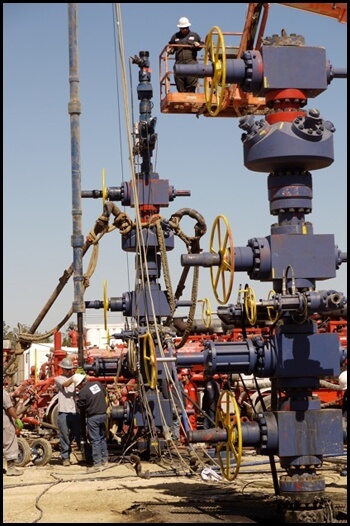The oil industry is rough on seals as companies are forced to drill deeper where the reserves themselves are at high temperatures and pressures in an unforgiving, aggressive chemical environment. What makes sealing solutions in these kinds of applications so challenging is how exposure to heat and chemicals can affect the long-term performance of a seal.
Challenges Facing Seals in the Oil Fields
What is required of a seal in the oil fields? Well, heres a starting list:
- chemical resistance
- performance at high temperatures
- electrical insulation
- resistance to chemical permeation
- flame resistance
- flexibility at low temperatures
- resistance to rapid gas decompression
- survival in a sour gas environment
- hardness
- toughness
- and wear resistance
When it comes to the chemical environment, seals may be exposed to media including steam, aromatic hydrocarbons, super critical CO2, hydrogen sulfide (H2S), oil, methanol, and amines. They also face issues such as steam swelling, blistering, thermal aging, and rapid gas decompression.
Polymers for Sealing Applications
Two of the most effective polymer materials for oil and gas sealing applications are PTFE and PEEK.
PTFE brings to the table unparalleled chemical inertness in even the most aggressive environments, good electrical properties, excellent flame resistance, and reliable performance in temperatures ranging from cryogenic to 500°F.
PEEK offers reliable performance in high temperatures up to 460°F, outstanding durability and fatigue resistance, good electrical properties, outstanding flame resistance, and chemical resistance to bases, acids, and organics.
Where Polymer Seals Are Used
Polymer seals are used in areas such as transfer systems, exploration and production equipment (including Enhanced Oil Recovery applications), turret swivel stack systems (with increasingly large diameter requirements), and subsea equipment (with high pressure and temperature requirements), just to name a few. Here are some more specific examples of where polymer seals are found:
- Backup seal rings
- Labyrinth seals
- Multi-phase flowmeters
- Spring energized-seals
- Gaskets
- Ball valves
- Downhole tools
- Emergency release systems
- Seat seals and seat inserts
- Stem seals
- Breakaway couplings
- Quick connect/disconnect couplings
- Body/bonnet and body/closure static seals
- Swivel joints
- Surface and subsea well heads
- Low fugitive emission valves
Conclusion
The oil and gas industry is a demanding one for seals, but polymer seals are up to the task. Whether its EOR applications, subsea oil exploration, or increasingly complex turret swivel stack systems, PTFE and PEEK seals can be found in use. Polymer seals can be found everywhere from downhole tools to emergency release systems to subsea well heads. They have proven themselves reliable and effective over the years.

